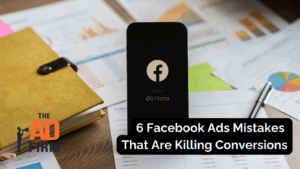If you want more people to find your business online, your website needs to work well on the devices where most of your customers are, on their phones. These days, most local searches happen when people are on the go, looking for nearby businesses and ready to act fast.
For business owners already investing in local SEO services, having a mobile-first site makes every dollar go further. It ensures the people who find you in search can easily navigate your site, call your business, or visit your location.
In this guide, we’ll explain what mobile-first design means and why it’s a crucial part of capturing local customers.
What Does Mobile-First Design Mean and Why Does it Matter?
Mobile-first design means creating your website for smartphones first, then scaling it up for larger screens like desktops or laptops. Instead of treating mobile visitors as an afterthought, this approach starts by making sure the site looks great and works smoothly on the smaller devices most people use.
This matters because the majority of local searches, such as “restaurants near me” or “plumber open now,” happen on smartphones. When people are out and about, they don’t have time to struggle with a slow, hard-to-navigate site. A mobile-first site prioritizes speed, ease of use, and quick access to essential details like your phone number or address.
It’s also essential to understand how this is different from simply making a website “mobile-friendly.” A mobile-friendly site adapts to smaller screens, but it’s usually designed for desktop users first. Mobile-first design flips that process, starting with the mobile experience so your site works seamlessly for the customers most likely to find and contact you.
Read also: Progressive Web Apps in 2025: Essential Features Every Website Needs
How Mobile-First Design Captures On-The-Go Customers
A mobile-first website isn’t just about looking good on a phone; it’s about making it easy for customers to choose your business while they’re out and searching. From faster load times to one-tap calling, these design features directly impact whether someone clicks, calls, or visits.
Working with a skilled digital marketing agency can ensure these features are implemented effectively to meet customer expectations.
1. Faster Load Times Win More Customers
When searching for a nearby business, people expect to find results quickly. Slow websites frustrate visitors, causing them to leave and pick a competitor whose site loads faster.
Maximize Your Online Impact with The Ad Firm
- Local SEO: Capture the local market with strategic SEO techniques that drive foot traffic and online sales.
- Digital PR: Boost your brand’s image with strategic digital PR that connects and resonates with your audience.
- PPC: Implement targeted PPC campaigns that effectively convert interest into action.
- Speed keeps customers from bouncing: Studies show that even a one-second delay in load time can cause users to abandon a page. If your website doesn’t load instantly on mobile, people are unlikely to wait. Mobile-first design trims unnecessary code, compresses images, and prioritizes essential content to keep pages light and fast.
- Mobile-first design removes barriers: Unlike traditional desktop-focused designs, this approach eliminates elements that slow down performance on phones. It focuses on what mobile users need most, keeping your site lean and efficient.
- Faster sites improve customer satisfaction: A quick-loading page helps visitors find what they want without frustration, making them more likely to choose your business. This positive experience builds trust and increases the chances they’ll contact you.
- Google favors fast websites: While this isn’t about technical ranking factors yet, it’s worth knowing that speed also influences how well your site performs in search. A fast site benefits both your customers and your visibility.
2. Easy Navigation Means More Conversions
Mobile users don’t want to pinch, zoom, or dig through cluttered menus. They need to find information like your phone number, hours, or directions quickly and without confusion.
- Clear menus make navigation effortless: Mobile-first design uses simplified menus that are easy to tap and understand. Instead of overwhelming users with options, it presents the most essential choices up front.
- Essential information is front and center: Your hours, contact information, and key services are prioritized so customers can take action right away. This eliminates the need to scroll endlessly or guess where to find details.
- Intuitive layouts guide users naturally: Buttons and links are sized for touchscreens, making them easy to tap without mistakes. This reduces frustration and helps customers get where they need to go faster.
- Better navigation boosts conversions: When visitors can find what they’re looking for in seconds, they’re more likely to call, visit, or buy. This smooth experience turns casual browsers into paying customers.
3. Click-to-Call and Map Integration Drive Local Sales
People searching on mobile often want to contact a business or visit right away. Mobile-first design makes these actions as easy as tapping a button.
Boost Your Business Growth with The Ad Firm
- PPC: Optimize your ad spends with our tailored PPC campaigns that promise higher conversions.
- Web Development: Develop a robust, scalable website optimized for user experience and conversions.
- Email Marketing: Engage your audience with personalized email marketing strategies designed for maximum impact.
- One-tap calling saves time: A click-to-call button lets users reach you instantly without having to copy or dial your number. This is especially valuable for service businesses where speed can mean securing a lead.
- Integrated maps bring customers to your door: Built-in maps and “Get Directions” features make it simple for visitors to navigate to your location. They don’t need to switch apps or type in your address manually.
- Convenience encourages action: When calling or visiting takes just one tap, customers are far more likely to follow through. Removing these barriers increases both foot traffic and incoming leads.
- It meets on-the-go expectations: Mobile users want quick answers and immediate options. Features like click-to-call and maps make your business the most convenient choice in their search results.
Key Elements of a Mobile-First Website
A mobile-first website focuses on giving your visitors the best experience on their phones before scaling up for larger screens. Here are the core elements that make your site truly mobile-first:
- Responsive layouts that adapt to any screen: Your website should automatically adjust to fit any device, whether it’s a small smartphone or a large desktop monitor. This prevents users from having to pinch, zoom, or scroll awkwardly to view your content. A responsive layout ensures every visitor sees your site exactly how it was meant to be viewed, regardless of their device. It also saves time and costs compared to managing separate desktop and mobile sites.
- Fast-loading images and optimized code: Large, uncompressed images can significantly slow down your website, especially on mobile connections. Optimizing your images and removing unnecessary code keeps your site lean and quick to load. This improves user satisfaction and prevents them from leaving your page due to frustration. A fast website also builds a positive impression of your business.
- Clear calls-to-action (call, visit, book now): Since mobile users want to act quickly, your website should make it simple for them to take action. Buttons like “Call Now,” “Get Directions,” or “Book an Appointment” need to be visible and easy to tap. These clear actions help convert visitors into paying customers without requiring them to search for your contact information. It’s about reducing steps between finding your site and taking action.
- Readable text sized for mobile screens: Tiny text is one of the most common frustrations for mobile users. Your site’s content should be easy to read without zooming, with fonts and spacing explicitly designed for smaller screens. This makes browsing comfortable and helps keep users engaged with your content longer. Simple adjustments like larger font sizes can make a big difference in usability.
- Buttons sized for touchscreens: Small or poorly placed buttons can cause users to click the wrong link or give up entirely. A mobile-first design uses large, well-spaced buttons that are easy to tap with one hand. This improves the overall experience and reduces frustration for your visitors. Making your site easy to use often leads to more conversions and return visits. These elements are especially valuable for businesses managing online stores or running ecommerce SEO campaigns, where mobile traffic often makes up the majority of sales opportunities.
How Mobile-First Design Boosts Your Local SEO Rankings
Elevate Your Market Presence with The Ad Firm
- SEO: Boost your search engine visibility and supercharge your sales figures with strategic SEO.
- PPC: Target and capture your ideal customers through highly optimized PPC campaigns.
- Social Media: Engage effectively with your audience and build brand loyalty through targeted social media strategies.
A mobile-first design doesn’t just improve user experience; it also has a direct impact on how your website performs in search results.
Here’s how it helps your local SEO: Partnering with a trusted SEO company can further enhance these efforts by aligning your design with proven strategies that improve visibility.
- Mobile-friendly sites reduce bounce rates: When your website loads quickly and works well on a phone, people are more likely to stay. This lowers your bounce rate, which tells Google that users find your site helpful and relevant. Lower bounce rates improve your chances of ranking higher in search results. It’s a simple way to show search engines your site provides value.
- Better mobile UX increases engagement: A well-designed mobile experience keeps visitors clicking, reading, and exploring your site. Google sees these more extended visits and higher interaction levels as signs of quality content. The more users engage, the more likely your site will be rewarded with better rankings. Engagement isn’t just good for SEO; it also helps generate more leads.
- Stronger visibility in “near me” searches: Many local searches use terms like “near me” or include a specific city or neighborhood. Mobile-first sites are more likely to appear in these results because they meet Google’s usability standards for local search. This visibility is key for attracting customers who are ready to visit or contact your business. A mobile-focused approach makes your business more competitive in local search results.
- Improved site speed impacts rankings: Google considers website speed when deciding where to place you in search results. A mobile-first design prioritizes faster load times, giving you an edge over slower competitors. This combination of speed and usability makes it easier to rank well for valuable local keywords. It’s one of the simplest ways to improve your online visibility.
- Better customer experience signals quality to Google: When people can easily navigate your site, find information quickly, and take action, it tells Google your site meets user needs. These positive signals help build trust with search engines and boost your authority over time. As your site earns more substantial rankings, you’ll attract even more local traffic.
Ready to Make Your Website Work for Every Customer?
A mobile-first website isn’t just about keeping up with design trends; it’s about capturing real customers who are searching for your business on the go. By combining a mobile-friendly experience with strong local SEO, you can make it easy for people to find you, contact you, and visit your location.
Strengthen Your Online Authority with The Ad Firm
- SEO: Build a formidable online presence with SEO strategies designed for maximum impact.
- Web Design: Create a website that not only looks great but also performs well across all devices.
- Digital PR: Manage your online reputation and enhance visibility with strategic digital public relations.
At The Ad Firm, we specialize in creating mobile-first websites that do more than look good; they perform. Our team combines web design, local SEO strategies, and optimization techniques to help your business show up in local searches and turn clicks into customers.
Whether you need a complete site redesign or want to fine-tune your current site for better local visibility, we’ll build a strategy tailored to your business goals.
Contact The Ad Firm today to make your website mobile-first and start capturing more customers in your area.






